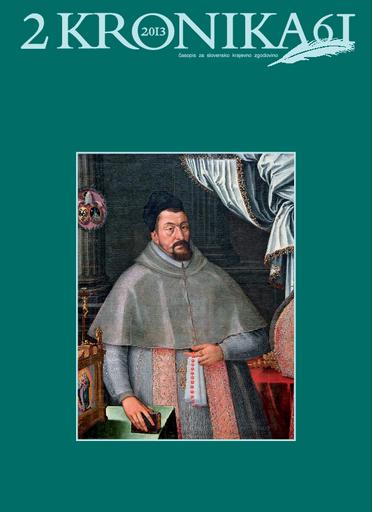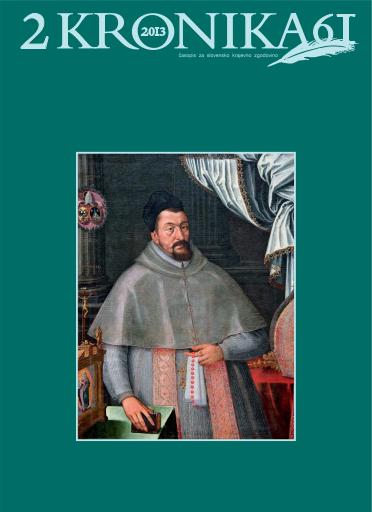/
Serijske publikacije
/
Kronika: časopis za slovensko krajevno zgodovino
Bled v slovenski literaturi »dolgega 19. stoletja« (2. del)

Avtor(ji):Mina Černe
Soavtor(ji):Miha Preinfalk (odg. ur.), Barbara Šterbenc Svetina (teh. ur.), Manca Gašperšič (prev.), Luka Vidmar (prev.), Mina Černe (prev.), Irena Žmuc (prev.), Mojca Bensa (prev.), Vinko Oblak (prev.)
Leto:2013
Založnik(i):Zveza zgodovinskih društev Slovenije, Ljubljana
Vir(i):Kronika, 2013, št. 2
Jezik(i):slovenščina
Vrst(e) gradiva:besedilo
Ključne besede:Bled, slovenska književnost, »dolgo 19. stoletje«, Bled, Slovenian literature, »the long 19th century«
Avtorske pravice:

To delo avtorja Mina Černe je ponujeno pod Creative Commons Priznanje avtorstva-Nekomercialno-Brez predelav 4.0 Mednarodna
Datoteke (1)

Ime:kronika-2013_2.pdf
Velikost:27.44MB
Format:application/pdf
Stalna povezava:https://hdl.handle.net/11686/file18348
Opis
Članek predstavlja podobe Bleda v času »dolgega 19. stoletja« skozi literaturo takratne dobe. V središču je
analiza slovenskih književnih del, ki temelji na motivno-tematskem pristopu. Glavne teme v obravnavanih delih
so verska, domovinsko-narodna, zgodovinska in ljubezenska tema. Snov je vzeta iz ljudskega izročila in
verovanja. Dela opevajo predvsem lepote Bleda in okoliške pokrajine. Glavni motivi so Blejsko jezero, otok, otoška
cerkvica, zvonček želja, grad, čoln, ribe, labod, fijakar. Pri tem prihaja do izraza vloga literature o Bledu pri
oblikovanju narodne zavesti. Pokaže se, da so podobo Bleda določali historizem, ljudsko izročilo, krščanska tradicija
in nacionalizem.
Metapodatki (12)
- identifikatorhttps://hdl.handle.net/11686/34981
- naslov
- Bled v slovenski literaturi »dolgega 19. stoletja« (2. del)
- Bled in slovenian literature in »the long 19th century« (Part 2)
- ustvarjalec
- Mina Černe
- soavtor
- Miha Preinfalk (odg. ur.)
- Barbara Šterbenc Svetina (teh. ur.)
- Manca Gašperšič (prev.)
- Luka Vidmar (prev.)
- Mina Černe (prev.)
- Irena Žmuc (prev.)
- Mojca Bensa (prev.)
- Vinko Oblak (prev.)
- predmet
- Bled
- slovenska književnost
- »dolgo 19. stoletje«
- Bled
- Slovenian literature
- »the long 19th century«
- opis
- Članek predstavlja podobe Bleda v času »dolgega 19. stoletja« skozi literaturo takratne dobe. V središču je analiza slovenskih književnih del, ki temelji na motivno-tematskem pristopu. Glavne teme v obravnavanih delih so verska, domovinsko-narodna, zgodovinska in ljubezenska tema. Snov je vzeta iz ljudskega izročila in verovanja. Dela opevajo predvsem lepote Bleda in okoliške pokrajine. Glavni motivi so Blejsko jezero, otok, otoška cerkvica, zvonček želja, grad, čoln, ribe, labod, fijakar. Pri tem prihaja do izraza vloga literature o Bledu pri oblikovanju narodne zavesti. Pokaže se, da so podobo Bleda določali historizem, ljudsko izročilo, krščanska tradicija in nacionalizem.
- This article presents Bled in the period of »the long 19th century« through the literature of that age. The main part is dedicated to the analysis of Slovenian literary works, based on motivic and thematic approach. The main themes in the studied works are religious, patriotic-national themes, historic and love themes. The material is taken from the folk traditions and beliefs. The works above all celebrate the beauty of Bled and the surrounding landscape. The main motifs are Lake Bled, the Bled Island, the island church, the wishing bell, the castle, the boat, the fish, the swan, and the coachman. It shows that literature about Bled importantly contributed to the shaping of national identity. It also shows that the image of Bled was very powerfully determined by historicism, popular tradition, Christianity and nationalism.
- The article presents Bled in the period of »the long 19th century« through the literature of that age. Throughout the history, Bled has inspired many poets, writers, travelers and historians who wrote about it. In the 19th century, it gained through literature a representative and unifying role in the formation of the Slovenian nation and became a symbol of Slovenia as the most beautiful place of Carinthia. In 1836, France Prešeren placed Bled on the pedestal with the poem Krst pri Savici (Baptism at Savica), where he equated it with an »image of paradise» in the province of Carinthia – with this poem, Bled actually entered into Slovenian literature. Its natural landscape became a popular motif and theme in a variety of literary texts, both foreign and Slovenian. Motivic and thematic literary analysis of Slovenian literary works about Bled showed the use of typical motifs praising the beauty of its landscape. The most common motif is Lake Bled, followed by the Bled Island, the church bell (wishing bell) and the boat. The Bled Castle is a less common motif. Swans, fish and coachmen are motivic fragments. The inspiration was drawn from the history of Slovenian provinces and especially Bled, as well as folklore and tradition in the days of the authors. Motifs occurring in the folk tradition are the Water Man, the black widow and the sunken bell. In earlier works, there were many motifs and themes related to Christian tradition, especially the worship of Mary Queen and the pilgrimage to the Bled Island. Also frequent was the actualization of the old traditions, the pagan temple of the goddess Živa on the island and the Christianization of these areas. Bled was associated to the national-patriotic theme. The writers of this age were trying to raise their readers’ national awareness. During the modern Slovenian literary period, a significant volume of literary works concerning Bled were primarily associated with the motifs and themes of love.
- založnik
- Zveza zgodovinskih društev Slovenije
- datum
- 2013
- tip
- besedilo
- jezik
- Slovenščina
- jeDelOd
- pravice
- licenca: ccByNcNd
